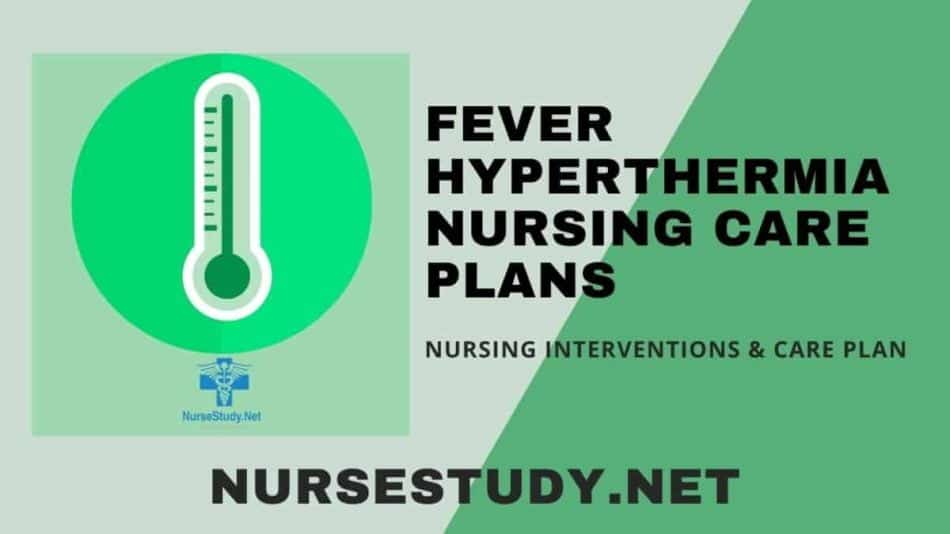Hyperthermia or fever is a critical medical condition characterized by an elevated core body temperature exceeding 104°F (40°C). This condition occurs when the body’s heat-regulation mechanisms fail due to excessive heat exposure or internal heat generation that surpasses the body’s cooling capacity. Understanding hyperthermia nursing diagnosis is crucial for healthcare providers to deliver effective, timely care and prevent severe complications.
Understanding Hyperthermia
Hyperthermia requires immediate medical intervention to prevent organ damage and potential fatality. Nurses play a vital role in assessing, monitoring, implementing cooling interventions, and educating patients about hyperthermia risk factors and prevention.
Common Causes
- Environmental heat exposure
- Intense physical exertion
- Dehydration
- Medications affecting thermoregulation
- Metabolic disorders
- Neurological conditions
- Sepsis
- Malignant hyperthermia
- Endocrine disorders
Clinical Manifestations
- Core temperature above 104°F (40°C)
- Hot, flushed skin
- Altered mental status
- Tachycardia
- Tachypnea
- Hypotension
- Muscle rigidity
- Seizures
- Decreased urine output
- Diaphoresis or anhidrosis
Nursing Assessment
Primary Assessment
Vital Signs Monitoring
- Continuous temperature monitoring
- Blood pressure and heart rate tracking
- Respiratory rate assessment
- Oxygen saturation monitoring
Neurological Status
- Level of consciousness
- Orientation assessment
- Pupillary response
- Presence of seizures
Skin Assessment
- Temperature
- Color
- Moisture
- Turgor
Hydration Status
- Mucous membrane moisture
- Skin elasticity
- Urine output
- Signs of dehydration
Secondary Assessment
- Medical history review
- Medication evaluation
- Recent activities analysis
- Environmental exposure history
Nursing Care Plans
Care Plan 1: Impaired Thermoregulation
Nursing Diagnosis Statement:
Impaired thermoregulation related to exposure to high environmental temperature as evidenced by elevated body temperature and altered mental status.
Related Factors:
- Environmental heat exposure
- Dehydration
- Physical exertion
- Compromised cooling mechanisms
Nursing Interventions and Rationales:
Monitor core temperature q15-30 minutes
- Rationale: Enables prompt recognition of temperature changes and intervention effectiveness
Implement cooling measures
- Rationale: Promotes heat loss through conduction and convection
Administer IV fluids as ordered
- Rationale: Restores fluid balance and supports thermoregulation
Desired Outcomes:
- Core temperature returns to 97.8-99.5°F (36.5-37.5°C)
- Mental status improves
- Vital signs stabilize
Care Plan 2: Risk for Seizures
Nursing Diagnosis Statement:
Risk for seizures related to hyperthermia as evidenced by elevated body temperature and altered consciousness.
Related Factors:
- Elevated body temperature
- Electrolyte imbalances
- Cerebral edema
- Metabolic changes
Nursing Interventions and Rationales:
Implement seizure precautions
- Rationale: Prevents injury during potential seizure activity
Monitor neurological status hourly
- Rationale: Enables early detection of neurological deterioration
Maintain patent airway
- Rationale: Ensures adequate oxygenation
Desired Outcomes:
- Patient remains seizure-free
- Maintains stable neurological status
- Airways remain patent
Care Plan 3: Fluid Volume Deficit
Nursing Diagnosis Statement:
Fluid volume deficit related to excessive fluid loss through diaphoresis as evidenced by dry mucous membranes and decreased urine output.
Related Factors:
- Excessive sweating
- Inadequate fluid intake
- Increased metabolic rate
- Altered level of consciousness
Nursing Interventions and Rationales:
Monitor fluid balance
- Rationale: Ensures adequate hydration status
Administer IV fluids as prescribed
- Rationale: Restores fluid balance
Monitor urine output hourly
- Rationale: Indicates kidney perfusion and hydration status
Desired Outcomes:
- Adequate urine output (>0.5 mL/kg/hr)
- Improved skin turgor
- Stable vital signs
Care Plan 4: Impaired Gas Exchange
Nursing Diagnosis Statement:
Impaired gas exchange related to increased metabolic demand as evidenced by tachypnea and decreased oxygen saturation.
Related Factors:
- Increased metabolic rate
- Respiratory muscle fatigue
- Altered consciousness
- Cellular hypoxia
Nursing Interventions and Rationales:
Monitor respiratory status
- Rationale: Enables early detection of respiratory compromise
Administer oxygen as prescribed
- Rationale: Improves tissue oxygenation
Position patient appropriately
- Rationale: Optimizes ventilation-perfusion matching
Desired Outcomes:
- Oxygen saturation >95%
- Normal respiratory rate
- Clear breath sounds
Care Plan 5: Risk for Injury
Nursing Diagnosis Statement:
Risk for injury related to altered mental status and muscle weakness as evidenced by confusion and impaired mobility.
Related Factors:
- Altered consciousness
- Muscle weakness
- Disorientation
- Poor coordination
Nursing Interventions and Rationales:
Implement safety measures
- Rationale: Prevents falls and injury
Provide frequent orientation
- Rationale: Reduces confusion and promotes safety
Assist with mobility
- Rationale: Prevents falls and maintains safety
Desired Outcomes:
- The patient remains free from injury
- Demonstrates improved mental status
- Maintains safe mobility
Prevention and Education
- Recognize early warning signs
- Maintain adequate hydration
- Avoid excessive heat exposure
- Monitor medication effects
- Use appropriate protective equipment
- Implement workplace safety measures
References
- Ackley, B. J., Ladwig, G. B., Makic, M. B., Martinez-Kratz, M. R., & Zanotti, M. (2023). Nursing diagnoses handbook: An evidence-based guide to planning care. St. Louis, MO: Elsevier.
- Campbell IT. Thermoregulation in critical illness. Br J Anaesth. 1997 Feb;78(2):121-2. doi: 10.1093/bja/78.2.121. PMID: 9068324.
- Drewry A, Mohr NM. Temperature Management in the ICU. Crit Care Med. 2022 Jul 1;50(7):1138-1147. doi: 10.1097/CCM.0000000000005556. Epub 2022 Apr 15. PMID: 35426840; PMCID: PMC9232928.
- Harding, M. M., Kwong, J., & Hagler, D. (2022). Lewis’s Medical-Surgical Nursing: Assessment and Management of Clinical Problems, Single Volume. Elsevier.
- Herdman, T. H., Kamitsuru, S., & Lopes, C. (2024). NANDA International Nursing Diagnoses – Definitions and Classification, 2024-2026.
- Ignatavicius, D. D., Rebar, C., & Heimgartner, N. M. (2023). Medical-Surgical Nursing: Concepts for Clinical Judgment and Collaborative Care. Elsevier.
- Rublee C, Dresser C, Giudice C, Lemery J, Sorensen C. Evidence-Based Heatstroke Management in the Emergency Department. West J Emerg Med. 2021 Feb 26;22(2):186-195. doi: 10.5811/westjem.2020.11.49007. PMID: 33856299; PMCID: PMC7972371.
- Silvestri, L. A. (2023). Saunders comprehensive review for the NCLEX-RN examination. St. Louis, MO: Elsevier.

